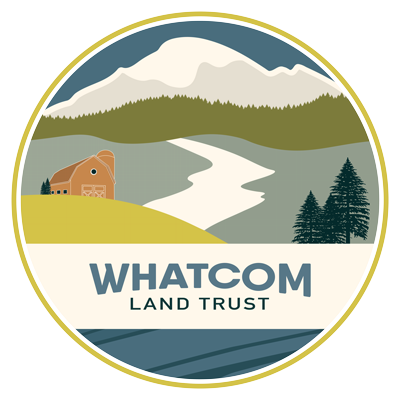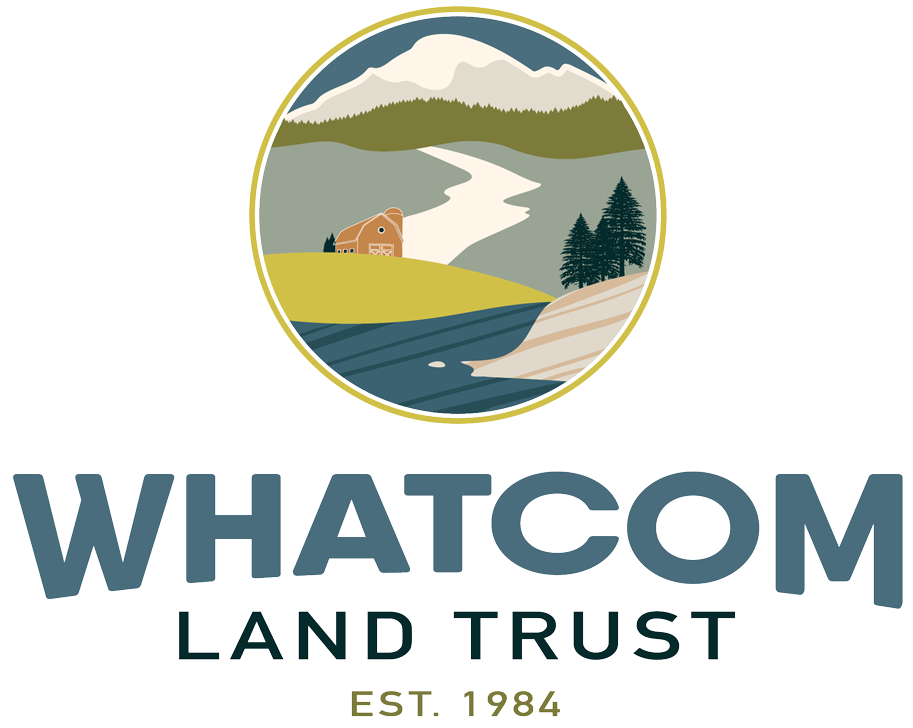Demolished and Polished: Restoring functioning coastal wetland habitat at California Creek Bridge Way
On a cold January morning, Stewardship Director Jennifer Mackey bundled up her young daughter Maizee to experience stewardship in action– the demolition of an asbestos-filled house at Whatcom Land Trust’s California Creek Bridge Way (Bridge Way) property.
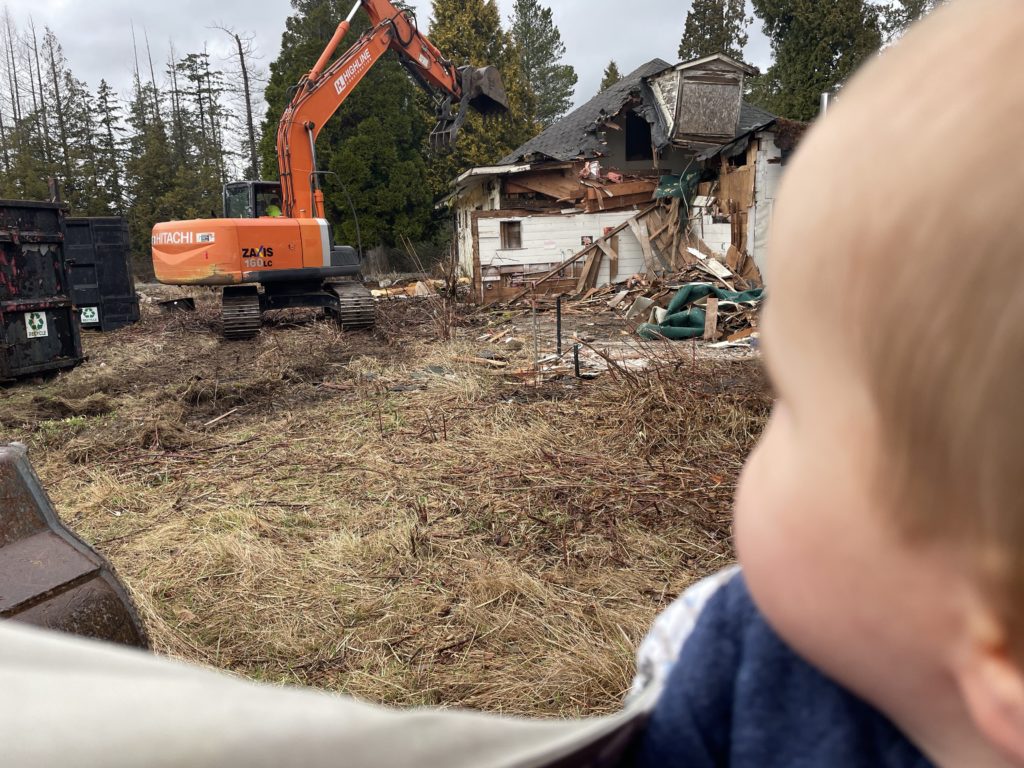
Whatcom Land Trust (the Trust) acquired Bridge Way in 2020 through a federal grant focused on the protection of coastal wetlands, one of the most complex and productive ecosystems in the world. Bridge Way provides critical habitat for native marine and freshwater species, shorebirds, and adds to a network of properties conserved by the Trust in the California Creek watershed. By protecting coastal wetlands and estuary shorelines in this area, the trust is able to maintain critical wildlife habitat and conserve wetlands that provide a buffer from impacts of sea level rise. The property included a house built in 1920 that had fallen into extreme disrepair, and required demolition to support restoration plans for the property.
“Every time the Land Trust conserves a new property, we build a stewardship plan that reflects its unique ecological needs. Often that includes strategies for consistent invasive removal and native plantings that support key habitat restoration. Some properties, like this one, require removal of structures or surfaces that do not serve our restoration objectives,” said Jenn.
Acres of invasive Himalayan blackberry had taken over riparian habitat, native trees and the house– leaving only a small pathway to and from the front door. Lovingly nicknamed the “Jumanji House” Jenn joked, “I don’t even think animals wanted to go inside.” In addition to the blackberry take-over, the house was full of asbestos requiring regulated removal by a specialized contractor. In total, the demolition removed over 300 cubic yards of house debris and took two years to safely complete. Additionally, all impervious surfaces adjacent to the coastal wetland, which drains into Drayton Harbor, were successfully removed.
Throughout the demolition project, the Stewardship team has worked to develop a long-term management plan for Bridge Way focused on improving ecological functioning and overall water quality. Initial invasive species removal on degraded parts of the property included Himalayan blackberry, reed canary grass, English ivy, scotch broom and English holly.
Following demolition, the Land Trust’s Board of Directors and staff gathered at Bridge Way for a celebratory work party. As Board members planted native saplings in the freshly overturned ground, Jenn commented it was “the first time in over 100 years that native roots have been in this soil. It’s very rewarding to watch a multi-year stewardship project like this come to fruition. Restoring wetlands helps to mitigate climate change in a myriad of ways; by absorbing greenhouse gasses, protecting water quality, reducing flooding, and even recharging drinking water aquifers. This restoration project will have long term impacts on overall ecosystem resilience in the California Creek watershed,” said Jenn.
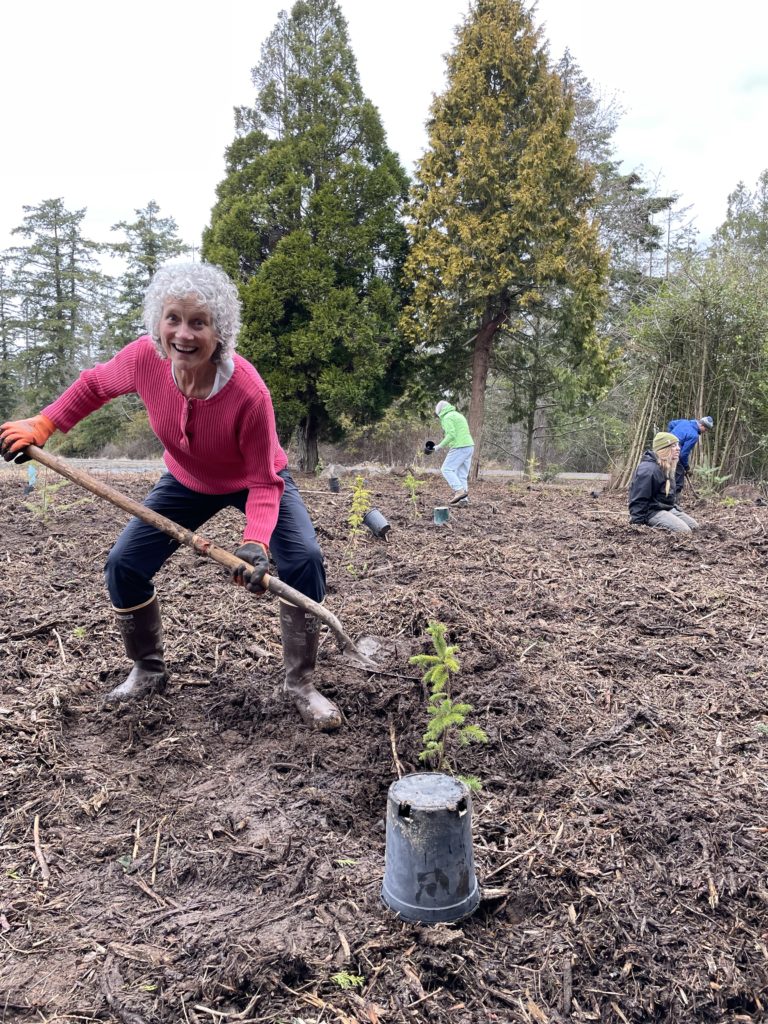
As the Land Trust Board and Staff piled muddy shovels and boots in the cars, the tide was beginning to go out. Water drained out of the creek, transforming the property into mudflats aflush with foraging shorebirds.
Looking over the critical habitat, now conserved forever, Jenn notes that “restoration work alongside community members is one of the most important parts of stewardship. When we actively care for the land we love, we connect with each other and make our home a better place for all species. This is our future, our responsibility, and the rewards when we work together are beautiful and incredibly impactful. I love taking my daughter Maizee out with me. We are truly training the next generation of land stewards!
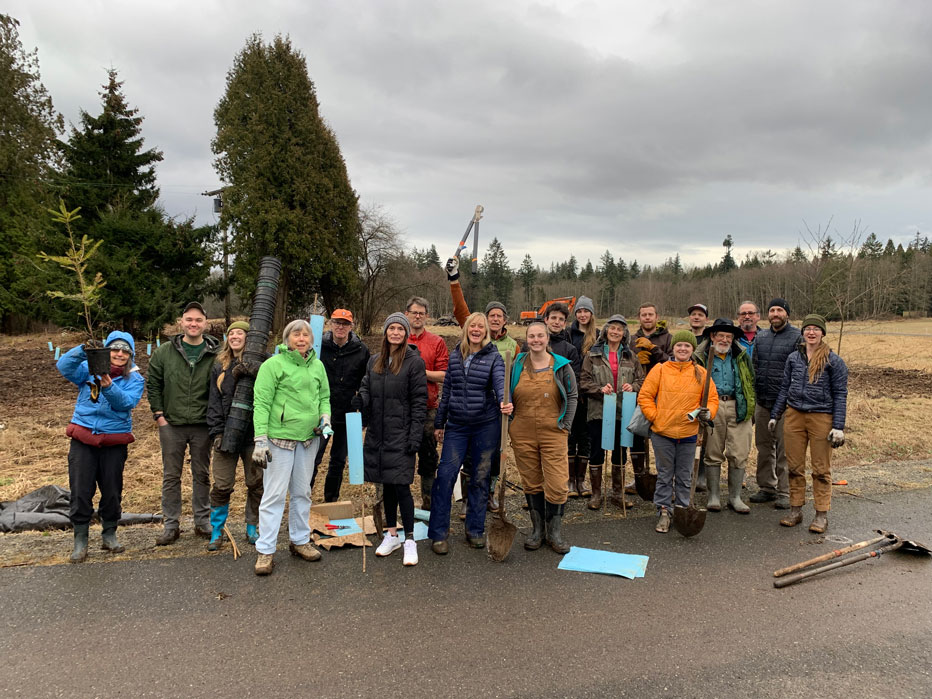
The land we love needs YOU! Interested in supporting our stewardship work on other properties throughout Whatcom County? Sign up for a Work Party or Field Friday event.
NOTE: Due to the sensitive nature of the habitat on this property, it is NOT open for public access.
